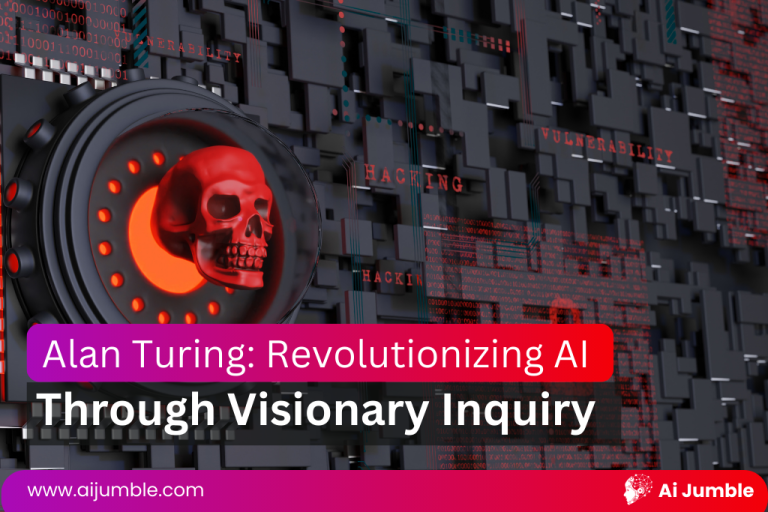6 Powers of AI for Cybersecurity Solutions
The combination of cybersecurity and artificial intelligence (AI) shines as a bright spot for digital resilience in the era of constant connectivity. The incorporation of artificial intelligence (AI) into our security apparatus is a critical component as we navigate the terrain of cyber threats. This straightforward investigation reveals the essential relationship between cybersecurity and artificial intelligence (AI), shedding light on how these two intelligent technologies collaborate to safeguard our digital borders.
The attack surface of enterprises is enormous and keeps expanding and changing quickly. To accurately calculate risk, up to several hundred billion time-varying signals need to be analyzed, depending on the size of your organization.
What Was The Outcome?
Enhancing cybersecurity posture analysis and improvement is no longer a problem for humans. Artificial Intelligence (AI) based cybersecurity solutions have surfaced in response to this unprecedented challenge, assisting information security teams in effectively and efficiently lowering the risk of a breach and strengthening their security posture.
Because AI and machine learning (ML) can quickly analyze millions of events and identify a wide range of threats, including malware that exploits zero-day vulnerabilities and risky behavior that could result in a phishing attack or the download of malicious code, these technologies have become indispensable in the field of information security. With time, these technologies learn from the past and recognize new kinds of attacks. Behavior histories create profiles of people, things, and networks so AI can identify and react to departures from the norm.
Come along for a quick trip where cybersecurity and AI collide to create a safer digital future.
Here are the 6 powers of AI for Cybersecurity solutions-
1. The Evolving Threat Landscape:
Hackers are using more sophisticated methods to take advantage of weaknesses in systems, networks, and apps, making cyber threats more complex. Current cybersecurity measures are insufficient to keep up with the speed at which cyberattacks are occurring. AI for Cybersecurity is at the forefront in transforming the security strategies, which are required due to the dynamic threat landscape.
2. AI-Powered Threat Detection:
Threat detection is one of the main areas where artificial intelligence (AI) has contributed to cybersecurity. Conventional methods often struggle to cope with the ever-increasing volume and intricate nature of cyber threats. Artificial Intelligence, specifically machine learning algorithms, examines large datasets to find trends that could indicate dangers. As a result, malicious actors can spend much less time in a system before being detected and dealt with by organizations in real-time.
3. Behavioral Analysis and Anomaly Detection:
Through anomaly detection and behavioral analysis, AI for cybersecurity expands the scope of security. AI systems can recognize anomalies that might point to a security breach by learning about typical user behavior patterns. By taking a proactive stance, businesses can stop possible threats before they become more serious, improving their overall cybersecurity resilience.
4. Predictive Cybersecurity Measures:
Predicting possible cyber threats using historical data and current trends is another application of AI’s predictive powers. Cybersecurity experts can stay ahead of new threats by using predictive analytics, which makes proactive defenses possible. The ongoing fight against cyber threats has changed dramatically with this move from reactive to proactive cybersecurity.
5. Automated Incident Response:
Artificial Intelligence enhances cybersecurity by automating incident response in addition to detecting threats. Artificial intelligence (AI)-powered systems can quickly determine the extent of a problem, launch pre-planned reactions, and even eliminate threats on their own. This lessens the workload on cybersecurity teams and speeds up response times, freeing them up to concentrate on important and high-impact tasks.
6. Challenges and Ethical Considerations:
AI is revolutionizing cybersecurity, but it also brings with it difficulties and moral dilemmas. Careful thought must be given to the ethical application of AI for cybersecurity as well as the possibility of biases in AI algorithms. Ensuring the responsible deployment of artificial intelligence (AI) in cybersecurity operations requires striking the correct balance between autonomy and human oversight.
Conclusion:
In the ever-evolving landscape of cybersecurity threats, Artificial Intelligence emerges as a game-changer. By teaming up AI technologies with cybersecurity tools, we not only improve how quickly we spot threats but also create a strong defense against advanced attacks. To sum it up, AI for cybersecurity builds a flexible shield that keeps adjusting to new challenges, making our digital defenses stronger. Using AI in cybersecurity isn’t just a tech upgrade; it’s a vital strategy in the constant fight to protect our digital world.
Dive deeper into the fascinating world of artificial intelligence with AI Jumble! Explore our comprehensive portal packed with Ai tools directory, informative articles, interactive features, and newly launched web stories.
Read another interesting blog on our Portal:
AI taking over humans is a foolish thought
You may also like to read:
Artificial intelligence (AI) cybersecurity
10 AI-Powered Cybersecurity Platforms to Protect Your Organization







